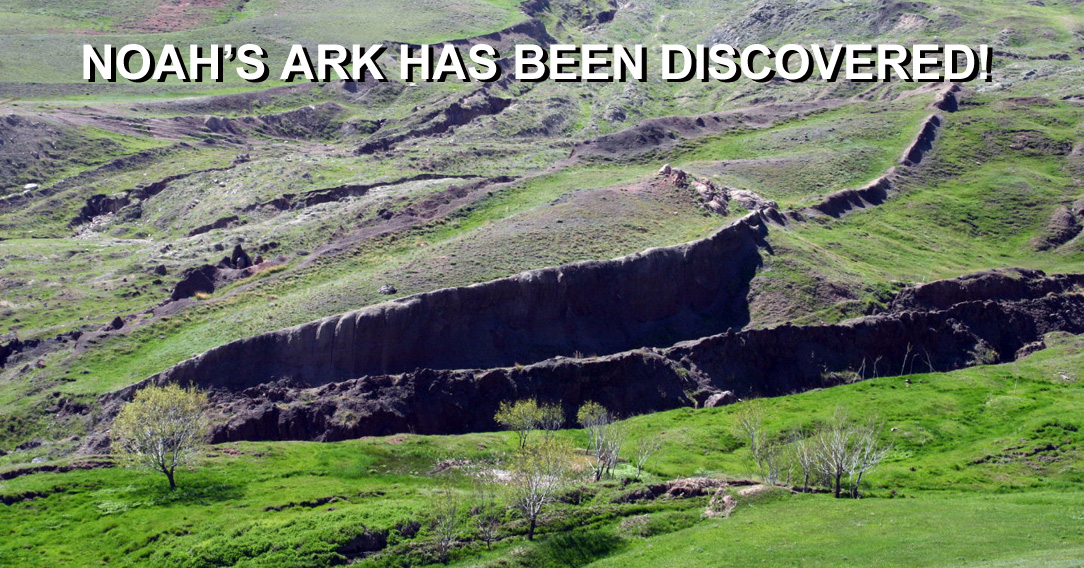

by Dan Eden for viewzone
Why is this not a BIG story?
I'm often amazed at our lack of knowledge about history. Ordinary people are hungry for this information, yet the organizations responsible to disseminate these facts seem to have an agenda to keep us in the dark. This is true when it comes to our ancient human history and even more so when the subject concerns religion or the Bible.
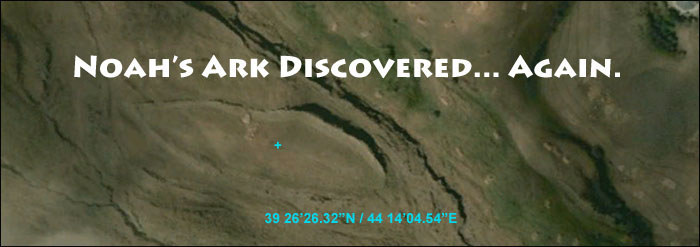
I won't hold you in suspense with this article: The Ark of Noah has been found. It's real. I'll describe the evidence in some detail and end with the historical and religious implications.
|
|
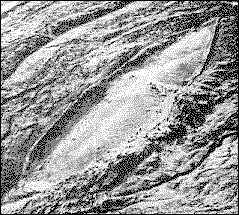 In 1959, Turkish army captain Llhan Durupinar discovered an unusual shape while examining aerial photographs of his country. The smooth shape, larger than a football field, stood out from the rough and rocky terrain at an altitude of 6,300 feet near the Turkish border with Iran.
In 1959, Turkish army captain Llhan Durupinar discovered an unusual shape while examining aerial photographs of his country. The smooth shape, larger than a football field, stood out from the rough and rocky terrain at an altitude of 6,300 feet near the Turkish border with Iran.
This mountainous land was originally part of the Kingdom of Armenia, a country that is thousands of years old and often considered the "first Christian nation", until the Turks took it over at the beginning of the 20th Century.
Capt. Durupinar was familiar with the biblical accounts of the Ark and its association with Mount Ararat in Turkey, but he was reluctant to jump to any conclusions. The region was very remote, yet it was inhabited with small villages. No previous reports of an object this odd had been made before. So he forwarded the photographic negative to a famous aerial photography expert named Dr. Brandenburger, at Ohio State University.
Brandenburger was responsible for discovering the Cuban missile bases during the Kennedy era from reconnaissance photos, and after carefully studying the photo, he concluded: "I have no doubt at all, that this object is a ship. In my entire career, I have never seen an object like this on a stereo photo."
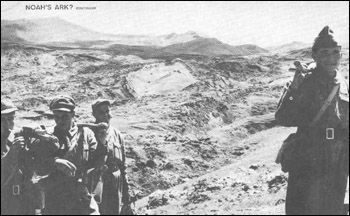
In 1960 the picture [above] was published in LIFE magazine under the heading of Noahs Ark? That same year a group of Americans accompanied Capt. Durupinar to the site for a day and a half. They were expecting to find artifacts on the surface or something that would be unquestionably related to a ship of some kind. They did some digging in the area but found nothing conclusive and announced to the anxiously waiting world that it appeared to be a natural formation.
Most of the global media turned away from the find and it became a non-story.
In 1977 Ron Wyatt visited the site. Obtaining official permission, Ron and others conducted more thorough research over a period of several years. They used metal detection surveys, subsurface radar scans, and chemical analysis -- real science -- and their findings were startling. The evidence was undeniable. This was the Ark of Noah.
#1 -- the Visual Evidence
The first part of the survey was to examine the object and take its measurements. The shape looked like the hull of a ship. One end was pointed as you would expect from bow [below: D] and the opposite end was blunt like a stern. The distance from bow to stern was 515 feet, or exactly 300 Egyptian cubits. The average width was 50 cubits. These were the exact measurements mentioned in the Bible.
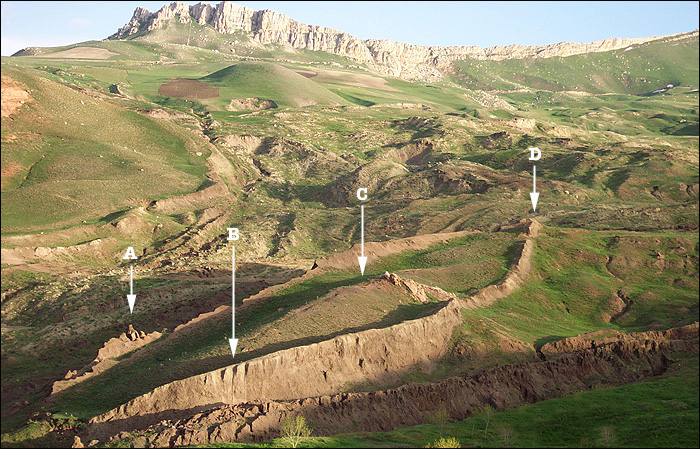
On the starboard side (right) near the stern there were four vertical bulges protruding from the mud [B], at regular intervals, that were determined to be the "ribs" of the hull [see below]. Opposite to these, on the port side, a single rib [A] protrudes from the mud. You can see its curved shape very clearly. Surrounding it are more ribs, still largely buried in the mud, but visible upon close examination.
Remember that this object, if it is the Ark, is extremely old. The wood has been petrified. Organic matter has been replaced by minerals from the earth. Only the shapes and traces of the original wood remain. Perhaps this is why the expedition in 1960 was disappointed. They anticipated finding and retrieving chunks of wood, long since eroded.
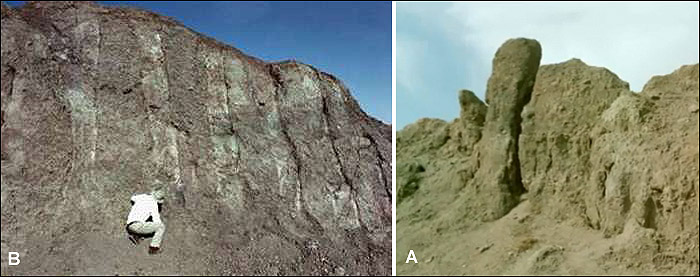
From the position of the object in the middle of an obvious mudflow, it is obvious that the object slid down more than a mile from its original location. Geologists believe it was originally over 1000 feet higher in the mountain and encased in a shell of hardened mud. They think that an earthquake in 1948 cracked the mud shell and revealed the structure. This is confirmed by stories from the surrounding villagers who tell of its "sudden appearance" around that time.
 Biblical accounts of the Ark describe it as having as many as six levels. The assumed shape of the Ark seems consistent with the bulge [C] in the middle of the object. In fact, as we will soon learn, radar scans of the structure suggest that this bulge is the collapsed debris of these levels.
Biblical accounts of the Ark describe it as having as many as six levels. The assumed shape of the Ark seems consistent with the bulge [C] in the middle of the object. In fact, as we will soon learn, radar scans of the structure suggest that this bulge is the collapsed debris of these levels.
Although most people think of the Ark as being rectangular, that only applies to the top decks. The sleek shape of the hull is necessary to enable the huge ship to remain stable in the water and survive tremendous waves.
#2 -- Ground Penetrating Radar
The human eye needs to see reflected light to recognize an object. To visualize what remains below the earth, scientists use microwaves which can penetrate the ground and bounce back when they hit something solid. This technique is commonly used to locate oil and other minerals. Called Ground Penetrating Radar (GPR), the apparatus is made from an antenna that transmits, then listens to receive the "echo" and prints the result on a piece of paper. The delay and strength of this echo tell the geologists how solid and at what depth the objects are under the earth.

The team of geologists didn't scan the entire object. Instead, they marked out lines that crossed the object with yellow tape. Then they dragged the antenna (about the size of a lawnmower) over the lines and watched the output on the paper recorder. When they got a strong "hit" -- meaning there was something solid underneath -- they would record the position on the tape [above]. Later, when they made a map of the object, the tape and the location of the "hits" they realized that there was indeed a structure underneath the mud.
"This data does not represent natural geology. These are man made structures. These reflections are appearing too periodic... too periodic to be random in that type of natural space." -- Ron Wyatt of SIR Imaging team
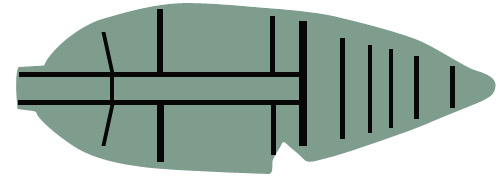
The radar scans revealed this structure [above] under the mud. The symmetry and logical placement of these objects shows that this is unmistakably a man made structure, most likely the Ark of Noah.
#3 -- Artifacts retrieved from the Ark
Using the GPR, Ron Wyatt discovered an open cavity on the starboard side. He used an improvised drill to make core sample inside this cavity and retrieved several very interesting objects. Below you can see the artifacts which were sent for laboratory analysis. On the left is the bore hole [see below], followed by what turned out to be petrified animal dung, then a petrified antler and lastly a piece of cat hair.

Even more amazing artifacts were found
Perhaps the most significant find from the Ark itself is a piece of petrified wood. When this was first found it appeared to be a large beam. But upon closer examination it is actually three pieces of plank that have been laminated together with some kind of organic glue! This is the same technology used in modern plywood. Lamination makes the total strength of the wood much greater than the combined strength of the pieces. This suggests a knowledge of construction far beyond anything we knew existed in the ancient world.

Tests by Galbraith Labs in Knoxville, Tennessee, showed the sample to contain over 0.7% organic carbon, consistent with fossilized wood. The specimen was once living matter.
Examination reveals the glue oozed from the layers. The outside of the wood appears to have been coated with bitumen.
Even more surprising were laboratory analyses which not only revealed that the petrified wood contained carbon (proving it was once wood) but there were iron nails [above right] embedded in the wood!
|
In Genesis 6:14, God told Noah to "make yourself an ark of gopher wood."
Acts 7: 45 & Hebrews 4: 8 are classic examples of such scribal errors. gpr = "g," as in gopher, k pr = "k,"as in kopher Pictured right is a simple visual comparison of the letters. |
But wait... there's more!
The most surprising find was discovered with sensitive metal detectors. The team located several strong "hits" that, when dug up, revealed large disc shaped rivets. From simple observation of the metal it was possible to see where the rivet had been hammered after being inserted through a hole [below].
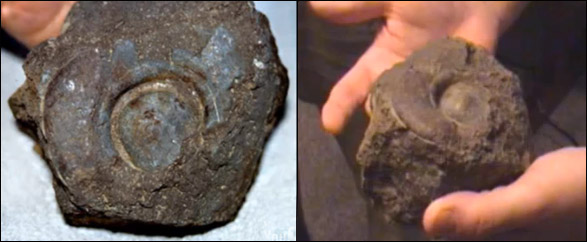
If rivets being used in ancient construction doesn't impress you, this surely will.
An analysis of the metal used to make the rivets revealed that they were a combination of iron (8.38%), aluminum (8.35%) and titanium (1.59%). Remember these trace metals have survived petrification and so do not indicate the exact content in the original material. (see Report from Galbraith Labs)
We know the aluminum was incorporated in the metallic mixture because it does not exist in metallic form in nature. This implies an extremely advanced knowledge of metallurgy and engineering. Characteristics of an iron-aluminum alloy have been investigated in The Russian Chemical Bulletin (2005) and reveal that this alloy forms a thin film of aluminum oxide which protects the material from rust and corrosion. The addition of titanium would provide added strength. This seems to have worked. The rivets have survived from antiquity!
The surrounding area has more surprises
Several miles from the location of the Ark, huge stones were discovered, some standing upright while others lying on the ground. These stones, weighing many tons, have holes carved in them. Scientists have determined that they were anchors and the holes would have been their attachment to a ship with hemp rope.
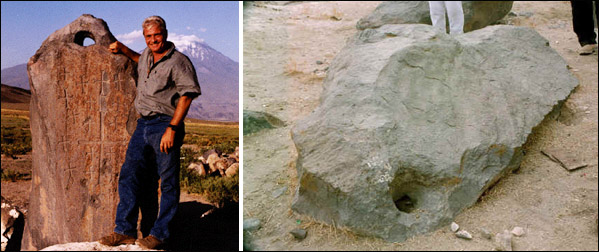
Often these stones will have crosses carved in them, from centuries ago when pilgrims made the journey to visit the Ark. Yes, the Ark was well known in the Middle Ages and even before. And its location was recorded in many historical documents.
"And the Ark rested in the seventh month, on the seventeenth day of the month, upon the mountains of Ararat. And the waters decreased continually until the tenth month: in the tenth month, on the first day of the month, were the tops of the mountains seen." -- Genesis 8:4-5
The Gilgamesh Epic (650 BC) gives Mt. Nisir as the landing place of the Ark. The local name for the town where the Ark was found is Nasar.
The annals of Ashurnasurpal II of Assyria (833-859 BC) places it south of the Zab river (correct).
Theophilus of Antioch (115-185 AD) said the Ark could be seen in his day in the Arabian mountains. Later Church Fathers also mention the Ark as late as the mid 7th century.
In the 13th century, Willam, a traveler, stated for the first time that Mt. Masis was the Ark location (present-day Mt. Ararat).
Ptolemy's Geographia (1548) mentions the mountains of Armenia as the place of landing. So does the traveler Nicolas de Nicolay (1558).
Pilgrims to the site would gather bits and pieces of the petrified wood which would be used as charms to ward off evil. When they encountered the anchors, they had no doubt about their association with the Ark. They often carves one big cross to represent Noah and smaller crosses representing his family.
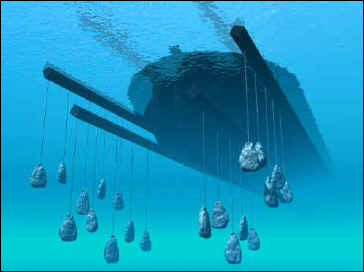
The huge anchors would have been suspended from the keel of the ship. This was a common practice among ancient mariners to stabilze a heavy ship and ensure that the bow is always facing the on-coming waves. A "top heavy" ship, such as the Ark, could easily be capsized by a wave approaching from the side. This is yet further proof that Noah's Ark was a reality and that it has indeed been found in Turkey.
After Noah's Ark landed
When Dr. Brandenburger originally examined and enlarged the photographs of the "strange object" in Turkey, he also saw hundreds of ancient foundations in the region, suggesting to him that this might have been the first town established after the flood, as described in the Bible.
Now their settlement extended from Mesha as you go toward Sephar, the hill country of the east. -- Genesis 10:30
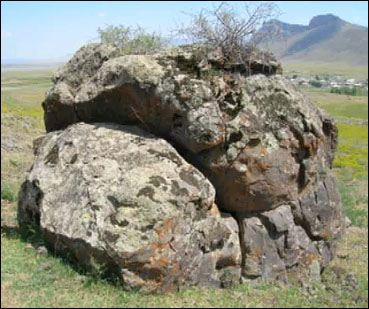
Archaeological teams have found many ruins and ancient graves. Many human ribs have been excavated and sent to laboratories for dating. In the midst of this alleged "first city" of Noah, there is an unusual and prominent structure, about 10 feet in diameter, that many believe to be the altar on which Noah made his first sacrifice.
Then Noah built an altar to the Lord, and took of every clean animal and of every clean bird, and offered burnt offerings on the altar.And the Lord smelled a soothing aroma. Then the Lord said in His heart, "I will never again curse the ground for man's sake, although the imagination of man's heart is evil from his youth; nor will I again destroy every living thing as I have done. While the earth remains, Seedtime and harvest, Cold and heat, Winter and summer, And day and night Shall not cease.
Again, it surprised me when I research a story like this and find substantial evidence that something extremely important has been found, yet it has been ignored by historians and the media. Perhaps it is because the advanced technology discovered in the Ark suggests that Sumerian legends, the Epic of Gilamesh, and other ancient writing might actually be correct when they speak of an extraterrestrial connection. The plural of god -- Elohim -- is used even in Genesis. Who were these "gods" and how did they walk the Earth and interact with humans of the era...
Or perhaps this discovery should be seen as a good reason to accept the Bible at its word.
We all need to look deeper into our past to learn what sort of beings we really are, where we are coming from and where we are going.
What do you think of this?
I'd really like to hear from you.
God Bless! If you liked the content of this story please support viewzone so we can continue to spread the (much needed) truth.
Help free Viewzone from advertiser's censorship!

Assistance with writing a scientific lab report of any kind.
If you need someone to help with writing your essay about Noah's Ark - contact WriteMyPaperHub.com and have your paper done by expert writers.
Noah's Ark
From Wikipedia, the free encyclopedia.
Noah's Ark is the vessel in the Genesis flood narrative (Genesis chapters 6-9) and by which the Patriarch Noah saves himself, his family, and a remnant of all the world's animals when God decides to destroy the world because of humanity's evil deeds. Noah's ark appears in the Quran as a ship.
God gives Noah detailed instructions for building the ark: it is to be of gopher wood, smeared inside and out with pitch, with three decks and internal compartments; it will be 300 cubits long (137.16 m, 450 ft), 50 wide (22.86 m, 75 ft), and 30 high (13.716 m, 45 ft); it will have a roof "finished to a cubit upward", and an entrance on the side.
Although some religious organisations still fully embrace the story of the ark, few scholars since the 18th century believe the story to be literally true. Among other issues are the immense difficulties of explaining how collecting, housing, watering, feeding and caring for very large numbers of animals in a wooden ship smaller than many modern ships could be achieved.
The Hebrew word for the ark is teba, which occurs only twice in the Bible, here and in the Book of Exodus, where it is used for the basket in which the infant Moses is placed by his mother. (The word for the ark of the covenant is quite different in Hebrew). In both cases, therefore, teba has a connection with salvation from waters.
It is made of "gopher" wood, a word which does not appear elsewhere in the entire Bible, and is divided into qinnim, a word which always refers to birds' nests elsewhere, leading some scholars to amend this to qanim, reeds, the material used for the boat of Atrahasis, the Babylonian flood-hero.
Noah is instructed to kapar (smear) the ark with koper (pitch): in Hebrew the first of these words is a verb formed from the second, and this is the only place in the Bible where "koper" means "pitch". God spells out to Noah the dimensions of the ark, 300 cubits by 50 by 30 -- Using the longer "Egyptian royal cubit" of 529mm, this works out at 158.7m long by 26.45m wide by 15.87m high (520 feet 8 inches long by 86 feet 9.3 inches wide by 52 feet 0.8 inches high). If the 457.2mm (18") cubit is used, this works out at 137.16m long by 22.86m wide by 13.716m high (450 feet long by 75 feet wide by 45 feet high).
The ark had three internal divisions (which are not actually called "decks", although presumably this is what is intended), a door in the side, and a sohar, which may be either a roof or a skylight.
The story of the flood is closely connected with the story of the creation, a cycle of creation, un-creation, and re-creation, in which the ark plays a pivotal role. The universe as conceived by the ancient Hebrews was made up of a flat disk-shaped habitable earth with the heavens above and Sheol, the underworld of the dead, below.
These three were surrounded by a watery "ocean" of chaos, protected by the firmament, a transparent but solid dome resting on the mountains which ringed the earth. Noah's three-deck ark represents this three-level Hebrew cosmos in miniature: the heavens, the earth, and the waters beneath. In Genesis 1, God created the three-level world as a space in the midst of the waters for humanity; in Genesis 6-8 (the flood story) he fills that space with waters again, saving only Noah, his family and the animals with him in the ark.
The parallels -- both similarities and differences -- between Noah's ship and that of the Babylonian flood hero Atrahasis have often been noted. Noah's is a rectangle, while Atrahasis was instructed to build his in the form of a cube; Atrahasis has seven decks with nine compartments on each level, Noah has three decks, but is not given any instructions on the number of compartments. The word used for "pitch" is not the normal Hebrew word but is closely related to the word used in the Babylonian story.
COMMENTS RECEIVED
I know how this sounds but about 25years ago, the Lord began awakening me in the middle of the night and speaking to me. I was a little naive and had been watching a documentary about the ark, and I said to Him, You could tell me where it is and I could tell them. He said it wasn't given for me to do, but before the end it would be found but man would not care. For if He gave His Son and they did not care, why would they care about a boat.
I'm sure no one will read this, but I just wanted to thank you for all your hard work, and it speaks as a confirmation to me.
Be blessed
Ellen B.
When the Bible use Elohim and is referring to THE God, they always preceded it with a singular identifier. It would be like us saying 'a gods'. This is just more evidence of the trinity, not of 'gods' coming to earth. Now, when you look into the stuff about the giants and such, THAT has a lot more evidence pointing to alien visitors (even though I still don't believe it).
JZ
Great article. I claim to be a Christian and a follower of Christ. I wanted to expound a little on the word "Elohim" which is a plural Hebrew word for gods. If John 1 is correct: "In the beginning was the Word, and the Word was with God, and the Word was God. The same was in the beginning with God. All things were made by him; and without him was not any thing made that was made," then I believe that to be God the Father and God the Son (Jesus). Not mentioned there but mentioned at other various places in the Bible is God the Spirit/Ghost making the "Trinity" a reality. Jesus mentioned to the 12 Apostles/Disciples that He would leave a "Helper" after He left which would convict the hearts of men. Elohim would also contain all three entities of God. I am not a scholar by any means, but have been a believer in Jesus for over 15 years and only know what I know from devout recreational study of the Bible. Thank you for your time!
Nate
Thanks, great info.
God Bless you
Dave
thank you for posting this article. I am very amazed by the story! :-) I BELIEVE on the one and true GOD creator of heaven and earth.
MS
I read your article on Noah and was very impressed with the information. I was searching for this information for some time now. It all started when I saw a trailer of the upcoming film (NOAH 2014).
For your information, I am a Muslim. I like to study and learn prophet stories from Qur'an and Bible. I would really be grateful to you if you can share some more proven facts on ancient stories of prophets. I would really like to be in your contact to discuss more of these stories.
My intention behind all this is I love to explore more and more about almighty god's books.
Wasim.S
Thank you for your interesting and informative article about Noah's Ark. I think it's testimony to The Truth of The Bible.
That is so interesting how the ship was balanced using those anchors, that is a neat illustration. Also, I did not know that others had known of the ark's location over the years. Thanks again and God Bless You.
Kris K
I just want to say thank you for this revelation. So many people these days are denying the Bible and the truth about God, saying it is all a myth but this is strong evidence that the Bible is really the truth.
I was praying that God would send me some kind of sign that I should be strong and believe in Him. I'm just a kid so I don't have many big problems in my life but I did kind of feel bad when it came to thinking about life and what it was all about. I heard so many bad things about there not being a God and that life was just all for nothing. Some times it is hard for someone my age to want to keep on living because it can seem so pointless and full of sadness. But reading this story made me realize that God is real and that if you pray He will give you some kind of sign or message that He is real and that you can feel safe because He is really listening to you.
I am happy now to know that there is proof the Ark was really built just as they say it was in the Bible. It means that most of the other stuff in there is probably true also. I will continue to pray and love God because He is listening to me and to all of us.
Thanks again for this good story.
SarahN
This is a good story. Thank you for sharing it. There is so much about history that we do not know and even more that we do not want to know for various reasons.
I think the evidence you presented is quite strong and more research should be done. But personally, I am convinced that, along with the traditional stories in many ancient texts, it must have been a real phenomenon. Again, thanks for sharing the information.
God Bless you.
Rev. G. H.
I understand that someone is making a documentary about this. I ill try to locate more information on the internet. It sure has me interested and also many people in my church group. Please post more information if you can find it.
FrankF
We all read your story in our Bible class today. Then we all talked about it and read the parts of the Bible where the story is written. We want to know more so if you have anything please write it for us to read. Thanks.
AnnaG
I am very surprised that this is not bigger news also. There is such bad news everywhere these days. It is a relief to see that such things are happening and even more of a relief that you are publishing it.
HR
I am well impressed with this. Proof that we know so little and that the Bible is so true!
JosannaL
Thanks! I love the article. My son and I built a model of an ark 1 inch to 3 feet scale.
This scale is about a typical "army man" size. The ark was about 12 feet long and we took it out to the ocean. I had no issues in waves that would scale to be about 50 feet tall.However, when I sent it against the equivalent of a 100 foot wave it capsized. I did several tests .. it was fun. I think if I had ballasted my ark better it would have even withstood the bigger waves.
Thanks again,
JoeG
I had almost given up believing in things from the Bible when I came upon this article. I can't express how it has given my life new hope that the Creator really does care for us. I started reading the Bible again with a new faith. Thanks so much for this. God bless your good work.
Susan H.
This really opened my eyes. Yes, the Bible is real and so is God. I have shared this story to my friends on facebook, both in my church and my own family and it has renewed our belief in the word of God. More people need to know these facts. Thanks.
Rev. Richard Husman
We used your story as part of our Sunday School and the children were surprised to learn that the Ark is real. I just wanted to say thanks for publishing it. God bless you.
Bob H.
What about you? What do you think? We'd love to hear from you.
Here's another Biblical story brought to modern times -- About King Solomon and Queen Sheba. We think you will also enjoy this story as it gives credence to the Ark of the Covenant as described in the Bible.
--Editor of viewzone.com
 "Gopher wood" is a misreading and scribal error. "Kopher" wood is correct and means wood (any wood) that is covered with Kopher. Kopher is bitumen. In the Genesis text (6:14), the context is clear. The GPR wood used, (a scribal error) is to be covered in KPR. G and K in Hebrew are so similar that inexperienced Hebrew "scholars," such as those translating the King James Version of the Bible, could have been prone to such errors, indeed, they made many such errors.
"Gopher wood" is a misreading and scribal error. "Kopher" wood is correct and means wood (any wood) that is covered with Kopher. Kopher is bitumen. In the Genesis text (6:14), the context is clear. The GPR wood used, (a scribal error) is to be covered in KPR. G and K in Hebrew are so similar that inexperienced Hebrew "scholars," such as those translating the King James Version of the Bible, could have been prone to such errors, indeed, they made many such errors.